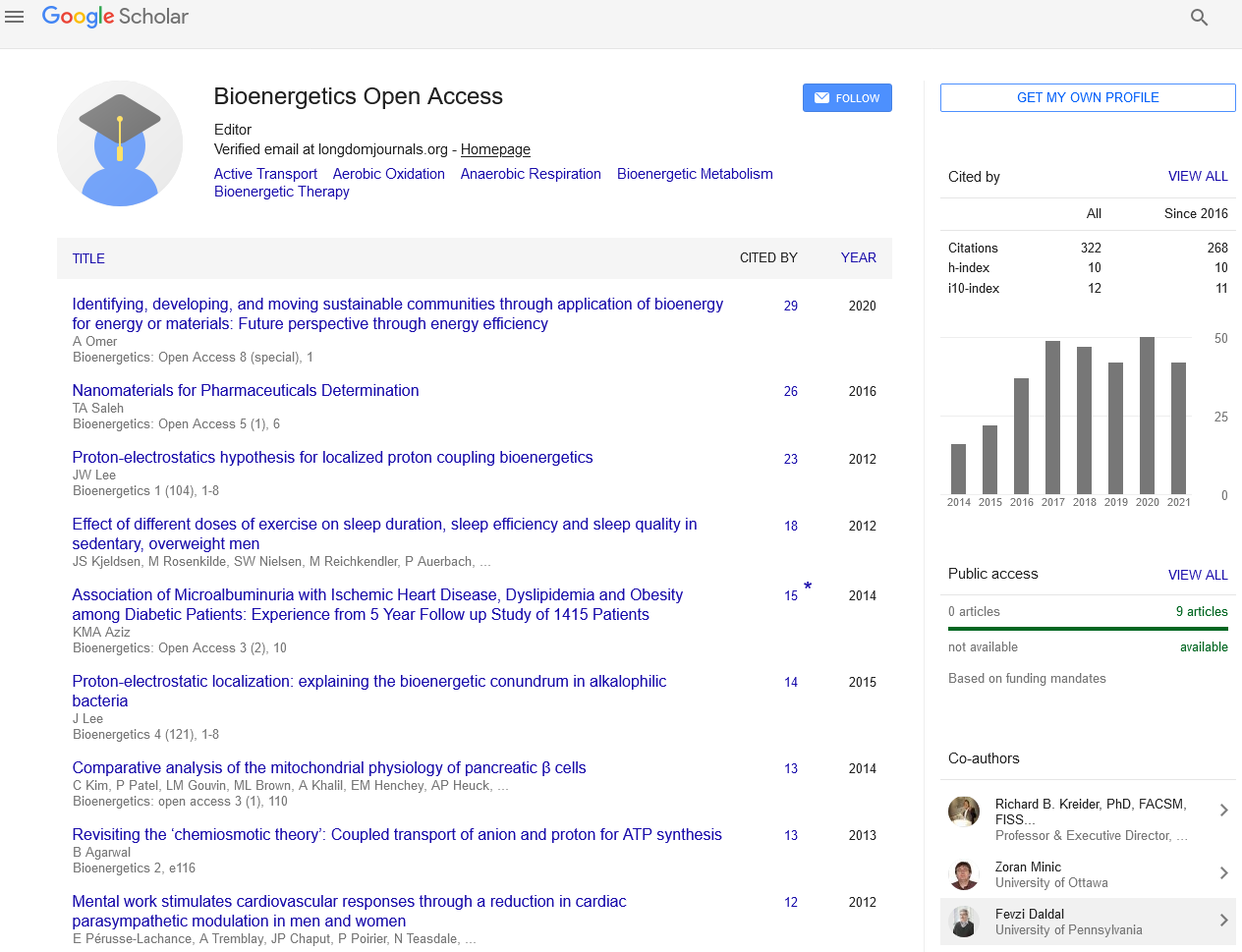Indexed In
- Open J Gate
- Genamics JournalSeek
- Academic Keys
- ResearchBible
- RefSeek
- Directory of Research Journal Indexing (DRJI)
- Hamdard University
- EBSCO A-Z
- OCLC- WorldCat
- Scholarsteer
- Publons
- Euro Pub
- Google Scholar
Useful Links
Share This Page
Journal Flyer

Open Access Journals
- Agri and Aquaculture
- Biochemistry
- Bioinformatics & Systems Biology
- Business & Management
- Chemistry
- Clinical Sciences
- Engineering
- Food & Nutrition
- General Science
- Genetics & Molecular Biology
- Immunology & Microbiology
- Medical Sciences
- Neuroscience & Psychology
- Nursing & Health Care
- Pharmaceutical Sciences
Abstract
Photobiomodulation Decrease Antioxidant Enzymes Activity in Obese Trained Rats
Antonio Eduardo de Aquino Junior, Fernanda Mansano Carbinatto, Cynthia Aparecida de Castro, Francine Perri Venturini, Nivaldo Antonio Parizotto and Vanderlei Salvador Bagnato
It is well established that the use of combined therapies involving exercise and photobiomodulation potentiate the treatment of overweight and obesity and its comorbidities. Nevertheless, the role of antioxidant enzymes in this approach remains to be well understood. The objective of this study was to investigate the effects of exercise combined to Photobiomodulation on the activity of anti-oxidant enzymes. Sixty-four rats were divided in two groups: sedentary and exercised. These groups were fed with normocaloric or high fat diets, and submitted or not to LLLT, totalizing 8 experimental groups. The exercise protocol used was moderate swimming training for 90 min/5 times a week for eight weeks, and LLLT (830 nm), dose was 4.7J / point and the total energy of 9.4J per rat. The LLLT application was performed in both gastrocnemius muscles after exercise. The activities of superoxide dismutase (SOD), catalase (CAT) and glutathione peroxidase (GPx) were accessed in muscle by the end of treatments. It was observed a general decrease in these enzymes activities (SOD and CAT) in the LLLT groups, with the exception of an increase in GPx activity in trained animals. The anti-oxidant enzyme showed alterations (Superoxide Dismutase: reduction SN versus SNL and SN versus SH; Catalase: reduction SN versus SNL, SN versus TN, Sn versus SH, SH versus SHL and SH versus TH; Glutathione Peroxidase: reduction SN versus TN, SH versus TH and increase TH versus THL). All comparisons were significant to p<0.05. We concluded that the combined use of exercise and photobiomodulation promotes modulation of anti-oxidant enzymatic activity.

